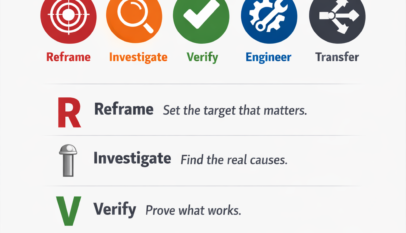As the saying goes, “hope for the best, but prepare for the worst.” This is especially true in business, where unforeseen risks and uncertainties can quickly derail even the most well-planned initiatives. Conducting a comprehensive risk assessment is critical in any business strategy.
The risk assessment identifies potential risks, analyzes their likelihood and impact, and develops strategies to mitigate or avoid them. While the specific methodology may vary depending on the business’s nature, some basic steps can be followed to ensure a practical risk assessment.
Step 1: Identify the Risks The first step in any risk assessment is identifying potential risks that could impact the organization. It can include anything from natural disasters and cybersecurity breaches to economic downturns and changes in market conditions. Brainstorming sessions, interviews with employees and stakeholders, and review of industry reports and historical data can help to identify potential risks.
Step 2: Assess Probability and Impact Once the risks have been identified, the next step is to assess their probability and potential impact on the business. Probability refers to the likelihood that the risk will occur, while effects refer to the severity of the consequences if the risk does occur. Probability and impact can be scored on a scale of 1 to 5, with 1 being low and 5 being high.
Step 3: Prioritize Risks After assessing the probability and impact of each risk, it’s important to prioritize them based on their severity level. Risks that have a high probability and high impact should be given the highest priority. In contrast, risks with low probability and impact can be prioritized less.
Step 4: Develop Mitigation Strategies Once the risks have been prioritized, the next step is to develop strategies to mitigate or avoid them. This can include implementing safety protocols, investing in cybersecurity measures, or diversifying the business to reduce reliance on a single market or product. Developing short-term and long-term strategies that can be implemented quickly in an emergency is essential.
Step 5: Monitor and Reassess Risk assessment is an ongoing process, and it’s essential to monitor and reassess potential risks regularly. This can include reviewing industry reports, tracking changes in market conditions, and conducting regular risk assessments to ensure that the organization remains prepared for any potential threats.
Many potential scenarios can arise regarding risk assessment, ranging from high-probability, low-impact situations to low-probability, high-impact events. These scenarios include temporary network outages to major natural disasters or global economic downturns. Regardless of the specific plan, the key to practical risk assessment is following a structured, step-by-step process.
- High Probability – Low Impact: This scenario represents situations that are likely to occur frequently but have a low impact on the organization. Examples of this scenario may include minor equipment failures or temporary network outages. The risk associated with this scenario is considered low, but it’s important to have contingency plans in place to minimize any disruption or downtime.
- Low Probability – Low Impact: This scenario represents situations that are unlikely to occur but have a low impact on the organization. Examples of this scenario may include minor employee injuries or minor data breaches. The risk associated with this scenario is also considered low, but it’s essential to have appropriate risk mitigation measures to minimize any negative consequences.
- Low Probability – High Impact: This scenario represents situations that are unlikely to occur but significantly impact the organization. Examples of this scenario may include natural disasters, major cybersecurity breaches, or unexpected global events that disrupt supply chains. The risk associated with this scenario is considered high, and it’s critical to have robust risk management strategies in place to mitigate the impact and ensure business continuity.
- High Probability – High Impact: This scenario represents situations likely to occur frequently and significantly impact the organization. Examples of this scenario may include employee turnover, data breaches, or supply chain disruptions due to local market conditions. The risk associated with this scenario is also considered high, and it’s important to have effective risk mitigation strategies in place to minimize any negative consequences and ensure business continuity.
After assessing the risks, the next step is to develop mitigation strategies to minimize or avoid them. This can include everything from investing in cybersecurity measures to developing supply chain redundancies or diversifying the business to reduce reliance on a single product or market. The key is to develop short-term and long-term strategies that can be implemented quickly and effectively in an emergency.
Once mitigation strategies have been developed, the next step is continuously monitoring and reassessing potential risks. This can include reviewing industry reports, tracking changes in market conditions, and conducting regular risk assessments to ensure that the organization remains prepared for any potential threats.
Overall, it’s important to remember that risk assessments are ongoing, and the risks associated with each scenario may change over time. Regular monitoring and reassessment of risks will help organizations identify and address potential vulnerabilities before they become major issues.

Conducting a risk assessment is critical to any business strategy. Organizations can prepare for potential threats and minimize negative impacts on their operations by identifying risks, assessing their likelihood and consequences, prioritizing them, and developing strategies to mitigate them. Regularly monitoring and reassessing these risks will help ensure that the organization stays prepared for future challenges.



















It’s very important education
Learning is key to growth ✨️ and understanding. We can only master excellence through learning and engagement in processes.